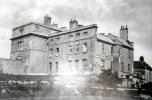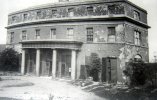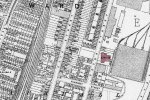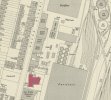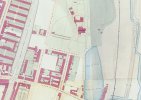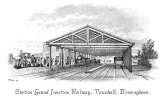-
Welcome to this forum . We are a worldwide group with a common interest in Birmingham and its history. While here, please follow a few simple rules. We ask that you respect other members, thank those who have helped you and please keep your contributions on-topic with the thread.
We do hope you enjoy your visit. BHF Admin Team
You are using an out of date browser. It may not display this or other websites correctly.
You should upgrade or use an alternative browser.
You should upgrade or use an alternative browser.
duddeston house
- Thread starter Astoness
- Start date
Here are three more, including one when it was a school. The following is copied from my notes for the Alan Godfrey Saltley 1913 map:
This was originally Duddeston House, built in 1758 as the house of Samuel Galton senior. The Galton family left the house in 1838 after the death of Samuel Galton junior, and it was a lunatic asylum till 1865. But from 1868 it was used as a school, being named St Anne's National School, and the building survived till 1971. The Galton family were Quaker gunmakers, a somewhat peculiar combination, but the son was also an avid scientific investigator and contributor to the affairs of the Lunar Society and gave assistance to Joseph Priestley during the Priestley Riots in 1791. One of the Galton factories involved in gunmaking was Duddeston Mill.
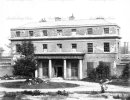
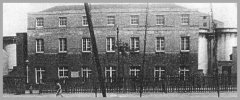
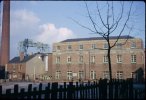
This was originally Duddeston House, built in 1758 as the house of Samuel Galton senior. The Galton family left the house in 1838 after the death of Samuel Galton junior, and it was a lunatic asylum till 1865. But from 1868 it was used as a school, being named St Anne's National School, and the building survived till 1971. The Galton family were Quaker gunmakers, a somewhat peculiar combination, but the son was also an avid scientific investigator and contributor to the affairs of the Lunar Society and gave assistance to Joseph Priestley during the Priestley Riots in 1791. One of the Galton factories involved in gunmaking was Duddeston Mill.



mw0njm.
A Brummie Dude
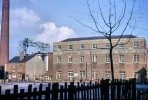
Duddeston House, Saltley gas works in the background 1954 photographed by Phyllis Nicklin . At this time it was St Anne's School
On the east side of Devon Street was the Galton family home. Known as Duddeston House, or later confusingly Duddeston Hall, it had been built in a neo-classical style in 1758. There were extensive grounds along the river with a lake covering 2 hectares which was stocked with exotic waterfowl. Samuel Galton Junior was a man of many interests. It was he who discovered that the seven colours of the spectrum are made up only of red, yellow and blue.
After the Galtons left in 1838 the house was used as a lunatic asylum until 1865. and with increasing urbanisation, from 1868 for the overflow of infants of St Matthew's School in Cato Street. As the population continued to increase, the building was altered the following year to accommodate a teacher's house and some 750 pupils, and was renamed St Anne's National School.
However, Her Majesty's Inspectors reported poor buildings and poor education iin 1894. The Board of Education were still demanding improvements in 1912. As part of the wide-scale redevelopment of the area the school was closed and the building demolished in 1971 with the children transferring to the new St Matthews School on Duddeston Manor Road.
BrummieGeoff
Sparkhill Lad
Duddeston Hall was the medieval moated manor house of the Holte family before their move to Aston Hall in 1631. The site in Hindlow Close may well be the location of 'Dudd's farm'
This information is widely known but it would make it a lot older than duddeston house , Devon street . also it says it was a moated house on the river Rae.
I have attached the pic of the lunatic asylum and Vauxhall station . Which a I assume was the pre duddeston station. In the 1960 I lived in dolman street . Went to school at st Ann’s , Vauxhall gardens and duddeston manor .
This information is widely known but it would make it a lot older than duddeston house , Devon street . also it says it was a moated house on the river Rae.
I have attached the pic of the lunatic asylum and Vauxhall station . Which a I assume was the pre duddeston station. In the 1960 I lived in dolman street . Went to school at st Ann’s , Vauxhall gardens and duddeston manor .
Attachments
Just taken this from 1 of my many Birmingham history books . This section was from Birmingham museum & Art gallery
Duddeston Hall and Vauxhall Gardens
Once the Holte family had moved to Aston Hall, the manor house at Duddeston was used as a home for the Dowager Lady Holte and the successive widows of former baronets in the family. By 1780, the house had been demolished and a new Duddeston Hall (or Dudson Hall) had been built on adjacent land leased from the Holte family by the gun maker, Samuel Galton. The new house was home to the Galton family but was later sold and used as a private lunatic asylum from 1835 to 1865. Three years later, the house became the home of St Matthew's School, which became St Anne's School in about 1870. The house continued to be used as a school until it was demolished in 1972.
Although the original Duddeston Hall had been demolished in the middle of the 18th century, the grounds became one of Birmingham's most fashionable entertainment spots; Vauxhall Gardens. At first it was a resort for the middle classes but later, admission charges were reduced and the gardens were open to anyone who could afford the 1s6d, and later 1s, fee. This change was partly due to the increasing urbanisation of the local area and the increasing amount of pollution emanating from local factories and the nearby railway line making the gardens less attractive to the richer members of Birmingham society. At the height of its popularity,
Duddeston Hall and Vauxhall Gardens
Once the Holte family had moved to Aston Hall, the manor house at Duddeston was used as a home for the Dowager Lady Holte and the successive widows of former baronets in the family. By 1780, the house had been demolished and a new Duddeston Hall (or Dudson Hall) had been built on adjacent land leased from the Holte family by the gun maker, Samuel Galton. The new house was home to the Galton family but was later sold and used as a private lunatic asylum from 1835 to 1865. Three years later, the house became the home of St Matthew's School, which became St Anne's School in about 1870. The house continued to be used as a school until it was demolished in 1972.
Although the original Duddeston Hall had been demolished in the middle of the 18th century, the grounds became one of Birmingham's most fashionable entertainment spots; Vauxhall Gardens. At first it was a resort for the middle classes but later, admission charges were reduced and the gardens were open to anyone who could afford the 1s6d, and later 1s, fee. This change was partly due to the increasing urbanisation of the local area and the increasing amount of pollution emanating from local factories and the nearby railway line making the gardens less attractive to the richer members of Birmingham society. At the height of its popularity,

